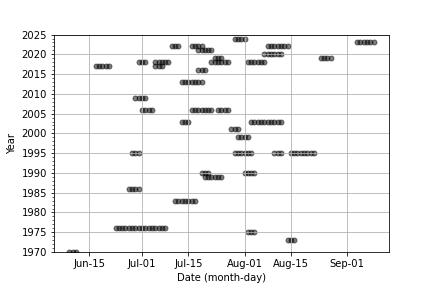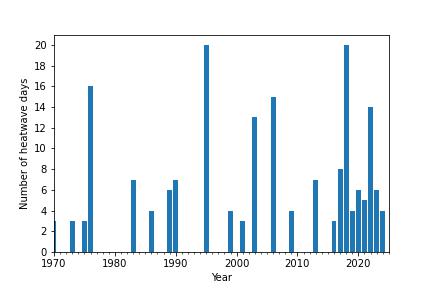Some statistics:
- Earliest day forming part of a heatwave:
- 9 June 1970
- Latest day that was part of a heatwave:
- 9 September 2023
- Most heatwave days in a year:
- 20 (in both 1995 and 2018)
- Longest heatwave: 16 days
- 23 June - 8 July 1976
- Most heatwaves in a year:
- 4 (in both 1995 and 2018)
- Fewest heatwaves in a year
- 0 (in each of 1971-1972, 1974, 1977-1982, 1984-1985, 1987-1988, 1991-1994, 1996-1998, 2000, 2002, 2004-2005, 2010-2012 and 2014-2015)

Both graphs updated to 13 July 2025
